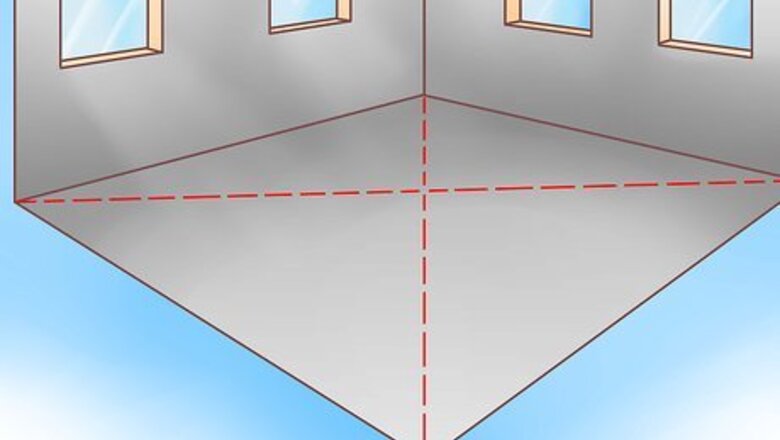
views
Measuring the Diagonal
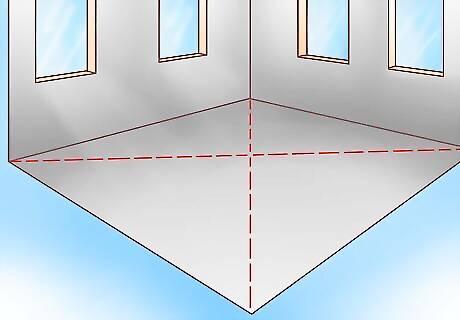
Measure the diagonals from all four corners of the room. Take a tape measure and measure the distance from one corner to its diagonal, and then measure the diagonal between the remaining two corners. If you were to string lines across the corners you measured, they would form an "X".

Know that if the measurements equal one another, your room is square. That's all there is to it! If your measurements do not equal one another, adjust the assembly until the diagonals equal one another.
Using the Pythagorean Theorem
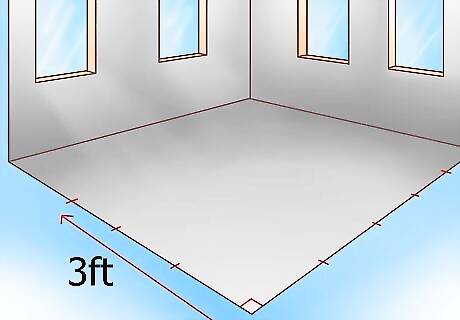
Measure 3 feet (or meters) from the corner of one wall and make a mark. You can use any unit of measurement you want as long as you stay consistent.
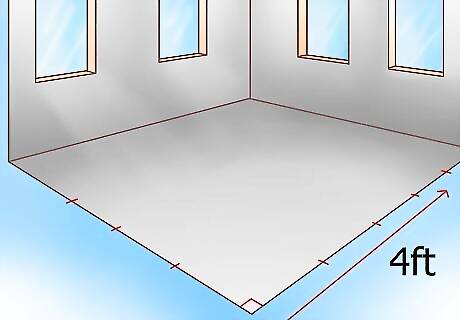
Measure 4 feet (1.2 m) from the adjacent wall on the same corner. Make a mark.

With a level or another straight object, span the distance between the two marks. If the straight line between the two marks measures 5 feet (1.5 m), that particular corner is a perfect 90° angle. The math technique that you use to measure the corner is called the Pythagorean theorem. It states that the squares of the smaller sides of a right triangle are equal to the square of the longer side: a + b = c Only right triangles can be used in the Pythagorean theorem, so if the triangle's numbers don't add up, the corner of the triangle isn't 90°. You don't need to use 3-4-5 as your measurements. You can also double, triple, quadruple, etc. the measurements if your room is very large. Measuring 6-8-10 is the exact same as measuring 3-4-5.
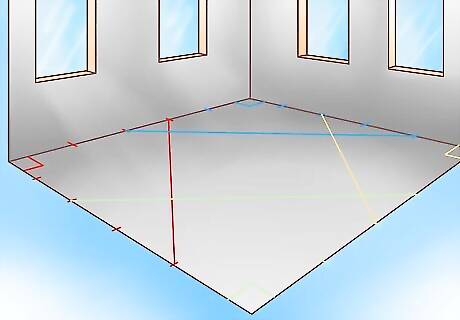
Repeat the procedure from the three other corners. If they are all 90° angles, and each wall is equidistant, you've got yourself a square room.
Squaring a Room for Wood or Tile Flooring

Find the exact center points of all four walls in the room. Take a tape measure, measure out each wall, and then divide the total length of each wall in half. Make a mark at each wall along its center point.
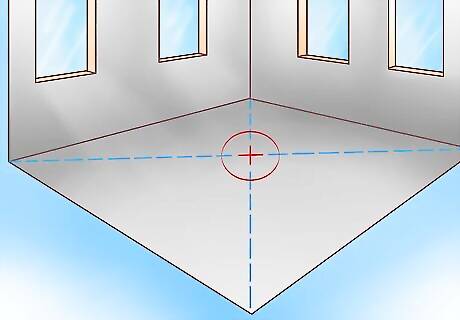
Connect both pairs of marks on opposite walls with a chalk line. Take a chalk line and snap it over the middle of the room to connect two center points across from one another. Then go to the adjacent wall and snap another chalk line across the room. You should have a "+" sign that meets in the center of the room.
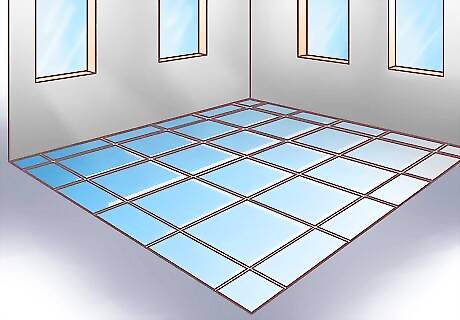
Start laying your wood flooring or tile, using the "+" as your starting point. If you are laying wood flooring, make sure to leave a ⁄2 inch (1.3 cm) buffer on all four walls, as the wood needs space to expand and contract. If you install the wood right up against all walls of a room, you'll likely get cracks in the wood when it doesn't have room to expand. If you're laying tile, you don't have to leave any buffer space, as tile does not expand or contract.




















Comments
0 comment